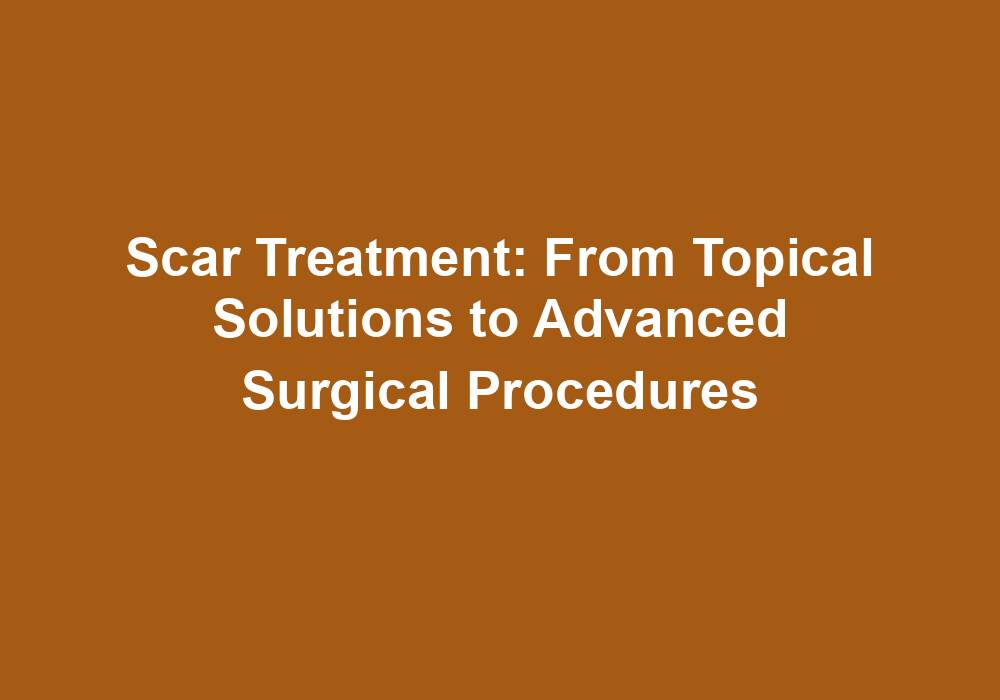Teleconsultation – 2023-07-14 17:55
How to get rid of scars
Dear Patient,
I understand you’re curious about how to get rid of scars. As a plastic surgeon, I can share with you various methods that are available, and these methods can range from non-invasive treatments to surgical procedures.
Firstly, it’s important to note that scars are a natural part of the body’s healing process. They form when the dermis, the second layer of skin, is damaged. The body forms a collagen fiber to repair this damage, resulting in a scar. Therefore, while we have methods to reduce their appearance, scars can’t be completely removed.
Topical Treatments
Over-the-counter (OTC) creams, gels, and silicone sheets can help to reduce the appearance of scars. These treatments hydrate and smooth scars, which can help to reduce their size, stiffness, and color. OTC treatments are relatively inexpensive and easy to use, often requiring application once or twice daily.
Laser Resurfacing
This is a non-invasive treatment that uses a laser to improve the appearance of scars. High-energy light is used to remove or reshape damaged skin cells. The procedure stimulates the body’s natural healing process, promoting the growth of new skin cells to replace the old, damaged ones. This process can help reduce the visibility of scars.
Filler Injections
For certain types of scars, filler injections might be an option. A substance is injected into the scar to help fill and smooth it out. This may need to be repeated periodically as the body absorbs the fillers.
Dermabrasion
This is a type of surgery that can help smooth the surface of the skin, making elevated scars less noticeable. The process involves removing the top layers of skin using a special device that ‘sands’ down the skin.
Surgical Scar Revision
This involves removing the scar and rejoining the normal skin. For scars that impair function, surgery can help to improve the range of movement. Surgery can also improve skin irregularities and reduce the appearance of ‘puckering’ of the skin.
Tissue Expansion
This method is used for hair-bearing areas, such as the scalp, that are scarred. A balloon-like device is inserted under the skin near the scar site. Gradually, over time, the balloon is filled with a saline solution, causing the skin to stretch and grow. It’s a lengthy process, but it can result in a significant reduction in the appearance of scars.
Remember, the treatment chosen largely depends on the type, size, and location of the scar. I’d encourage you to make an appointment for a consultation so we can discuss the best possible treatment options for your specific case.
Sincerely,
[Your Name]
Highlighted Phrases
1. Dermis: The inner layer of the two main layers of the skin.
2. Collagen Fiber: The protein that gives the skin its strength and structure.
3. Laser Resurfacing: A treatment to reduce facial wrinkles and skin irregularities.
4. Dermabrasion: A type of surgical procedure that refinishes the top layers of the skin with mechanical abrasion.
5. Tissue Expansion: A plastic surgery technique where skin tissue is made to grow for reconstructive purposes.
Glossary
Dermis: The second layer of skin, underneath the epidermis.
Collagen Fiber: The primary structural protein found in skin and other connective tissues.
Laser Resurfacing: A procedure that uses a laser to improve the appearance of skin or treat minor facial flaws by removing layers of skin.
Dermabrasion: A type of surgery that removes the top layers of the skin.
Tissue Expansion: A technique used in plastic surgery that causes the body to ‘grow’ extra skin through the process of gradual stretching.
General Data Protection Regulation (GDPR)
Kindly take note that this is a research project conducted by Michael Truppe, MD and should not be considered as medical advice. All rights reserved © 2023 Michael Truppe, MD.
EURODOC Telemedizin ForschungsgesellschaftmbH
Albertgasse 3/6, 1080 Wien
Tel: +43 1 408 95 00 66
Email: cloud@smile.wien
Web: https://smile.wien


Leave a Reply